The Man Who Started It All - 7/15/19
- Rex Ballard
- Jul 16, 2019
- 7 min read
Updated: Jul 17, 2019
Most of us learn about Sutter's Mill as the starting place for the great California Gold Rush, but the man that is actually credited with starting it all is James W. Marshall. We spent the day exploring the James W. Marshall Gold Discovery State Park in Coloma, CA.

James W. Marshall was a carpenter by trade and a skilled craftsman. He was borne of English immigrant parents in New Jersey but as soon as he was old enough he began his personal migration toward the West. He initially settled in Indiana and Illinois in 1837. Around the time of the Mexican / American War in 1846, he volunteered to serve under Captian John C. Fremont's California Brigade. Although he only had a fifth grade education he had successfully built an operated sawmills in other locations. At the end of the war, he settled in and around Sacramento, where he developed a partnership with John Sutter. It was their plan to build a saw mill in the small community of Coloma, California using water from the South Fork of the American River to power the saw mill. In 1847, there was a demand for timber in the growing towns of San Francisco and Sacramento. They assumed that by building their mill close to the timber operations, they would be able to deliver cut wood to market faster.

While Sutter seems to get credit for the mill, it was actually James Marshall that was doing all of the hard work. In 1847, the river's course was very different from where it actually flows today. In order to get water to where the mill needed to be built, Marshall directed workers that were made up of local Indians, and a Mormon brigade that had settled in the Coloma Valley, to dig a large culvert called a head-trace to divert water from the river to the saw mill. The water would thereby turn a water wheel that would power the saw. The water would exit the mill and flow back to the river through another culvert that was dug. This was called the tail-trace. Some time in the fall or winter of 1847 a storm had caused debris to dam up the head-trace and the tail-trace. Marshall had instructed the work crews to clear it out and to dig both culverts deeper and wider. Historians are unsure of the exact date, but credit is given to the date of January 24, 1848 as the day that James Marshall, upon inspecting the modifications that had been made to the tail trace had bent down to look into the flowing water because a glint had caught his eye. He found two or three small flecks about 1/2 the size of a pea that were gold in color. Although he only had a fifth grade education, he knew that if it was gold it would be malleable. With a small rock, he pressed down on the object he had picked up. If it was Iron Pyrite (fools gold), which was plentiful in the area he knew it would shatter under the rock. It did not shatter, it merely flattened, so he we fairly certain he had found gold. Marshall had show what he had found to some other people but both he and Sutter had hoped to keep word of the discovery a secret. Not because they wanted the gold for themselves, but because they knew that if word got out, their plans for the saw mill would be ruined and the site overrun with gold seekers.

Unfortunately, there was no keeping this a secret. There were too many workers and when they weren't working in the mill they were panning for gold. With their early success, they soon would abandon working in the mill altogether. Near the small town of Coloma, Sam Brannan owned a general store. He also published a news paper in San Francisco. When he heard of he discovery of gold, rather than publish the news, Sam Brannan the businessman, instead promptly purchased every shovel, pick axe and any other mining supplies he could get his hands on. Only then, did he publish the news. Folklore suggests that Brannan himself and with the help of news boys would go up and down the street shouting "Gold, Gold - on the American River". Thus, starting one of the greatest voluntary mass migrations in all of history. Some historians suggest that Brannan profited more from the gold rush than any '49er would. Brannan would go on to become one of the wealthiest people in the now growing city of San Francisco. He is credited with building the original Cliff House overlooking the Pacific Ocean. Ever the shrewd entrepreneur, Brannan purchased the rights to a ship that had floundered on the rocks and used the salvaged timber from the ship to build the Cliff House.
So what becomes of the little community of Coloma, where Sutter and Marshall built their mill? At the time of the discovery, Coloma was a town of only a few hundred people. Although thousands of people would pass through Coloma during the Gold Rush, few would settle there for long. The reason being that the gold that could be found in the area had all been found by the end of 1848. Coloma would not go on to become a large Gold Rush town. However, it did have the distinction of being an ethnically diverse community. Chinese immigrants had settled there and a chinese store still stands there. When the state park took over the building, there were no furnishings in it. Someone in Newcastle, Calif (Near Auburn) had inherited an old Chinese store and had all the furnishings and artifacts, but the building was now gone. They donated their items to the park in Coloma, and to their surprise, everything fit into the Coloma store perfectly as they had seen it in old photographs. This leads historians to believe that as Chinese merchants immigrated, they had a common store model and layout. The stores would have a place where Chinese food could be purchased and consumed. a Chinese pharmacy, a butcher shop and imported food stuffs from China (dried squid, fish, etc.) On the wall of the store written in Chinese characters is a banner. The person guiding us on the tour told us that the banner when translated says "The Gold is For the Chinese Too". Could be folklore.
(Scroll to see more photos)
At the time Sutter and Marshall began work on the mill in 1847 the tribe of Nisenan Indians were also occupying this valley. Sutter and Marshall helped promote a peaceful coexistence with the Indians, in part because they hoped they would help with the mill. However, after the Gold Rush, the miners coming through the area were less tolerant of the Indians and the Nisenan population would decline. Ancient grinding rocks are still visible near the area where the mill was being build. Archeologists estimate that based on the size and depth of the depressions they estimate that Indians used that site for over 1000 years before the settlers appeared. These and recreations of traditional Nisenan dwellings are preserved in the Park. Coloma was also home to Nancy and Peter Gooch, who would come to California as slaves but gain their freedom when California achieves statehood. Although Peter passes away in 1861, Nancy goes on to operate a laundry and become a respected member of the community. Eventually, she earns enough money to either secure the freedom or her enslaved sons or pay off the debts of her free children. They also come to settle in Coloma and go on to operate an orchard of some 340 acres, some of the trees from that orchard continue to bear fruit in Coloma. One of the homes built by the family and used as a rental still remains and stands as a testament to their success in this small community.
And what would become of the sawmill built by Marshall and Sutter? It was all but abandoned after the discovery of gold. The head-trace and tail-trace were covered with miners and soon filled with silt from panning operations and on top of that, there were no workers to work the mill. As the immigrants began to flow into California and the West in 1849, new steam powered sawmills were being built in Sacramento and all along the Pacific coast. Lumber was now flowing into California thus quashing Sutter's and Marsall's dream of becoming lumber barons.

John Sutter's mill was one of the many entrepreneurial failures he would suffer. However, he would become famous for the discovery of gold and he managed to leverage this notoriety through self promotion. Eventually, he would return to the East as a celebrity, build a large home and parade in his fame. His sons would go on to become successful businessmen and Sutter would live out his life in comfort based on the generosity of his sons.

James Marshall's fate would not be as kind. Eventually, he would have to abandon his homestead near Coloma because he too had become famous for the gold discovery. Desperate miners would sometimes claim that Marshall had magical powers for finding gold and would threaten his life if he would not tell them where to find new gold. Eventually, he would become an alcoholic. At one point the newly formed State of California would recognize Marshall for his discovery and they would grant him a $200/month pension that would allow him to live comfortably. At one point citizens would criticize the pension going to someone that was an alcoholic. The State would consequently cut the pension to $100/month. When Marshall would go before a tribunal to petition that his pension be reinstated, a bottle of rum would fall from his coat pocket and the legislators would cut off his pension entirely. Unfortunately, Marshall would die in poverty. Before, he passed he did write that history would likely remember him kindly. And here we are standing in the State Park named in his honor and not in Sutter's. One final testament to the good nature of this man, when he died penniless, it was Nancy Gooch's son Pearly (the Coloma black family) that would see to James Marshall burial. The two had become friends when they both were in Coloma.
Our visit to the Park was really entertaining and educational. Coming on a Monday after a busy weekend was good fortune on our part. On the guided nature tour we were the only ones there in time for the first tour of the day and our guide Cynthia did a great job pointing out the sites and relating the history of time to us. Here are some other pictures we took while there.

(Scroll to see more photos)
Additional Displays in the park (Scroll to see more photos)



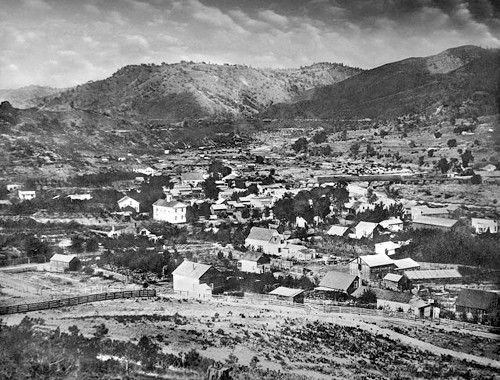

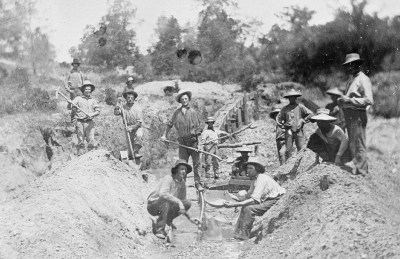













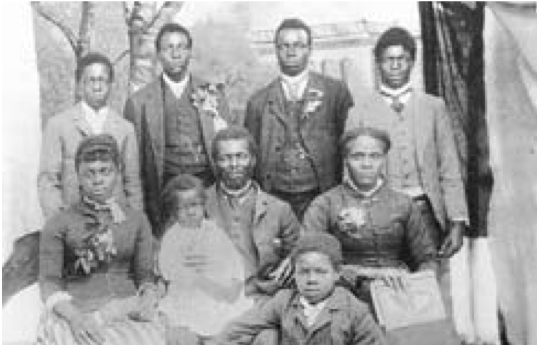









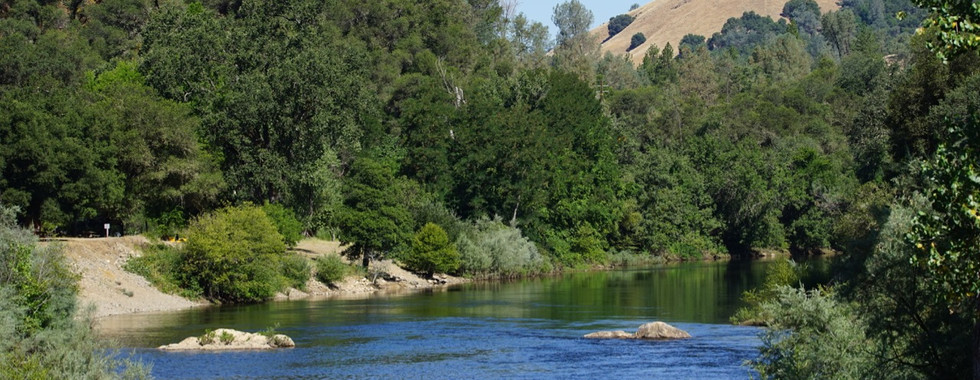

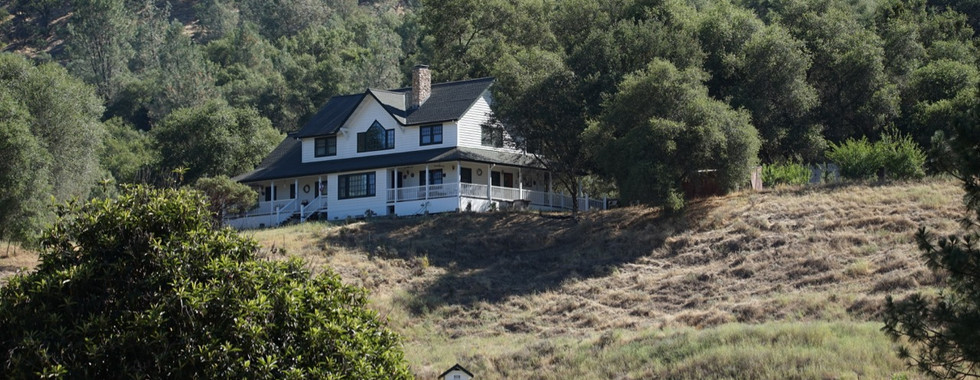











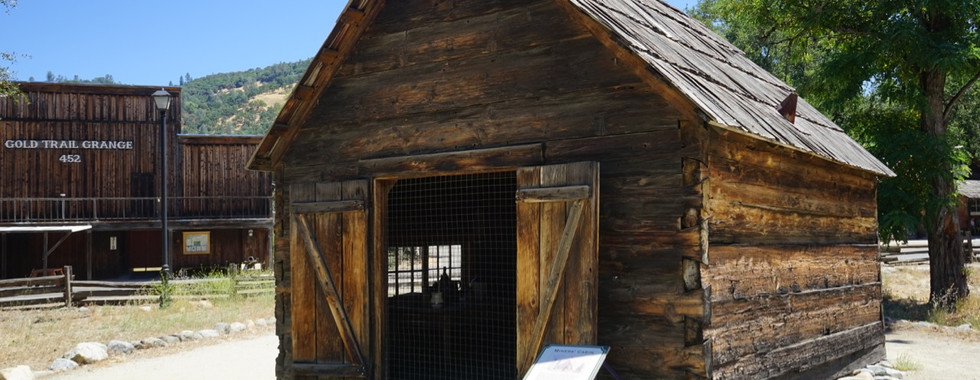



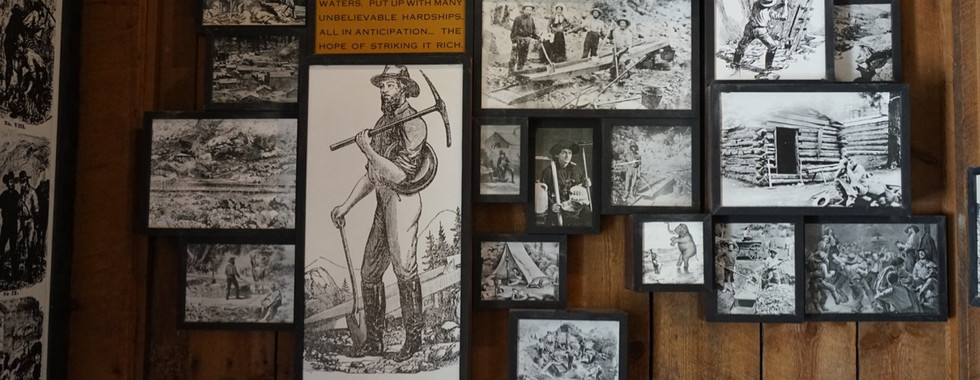







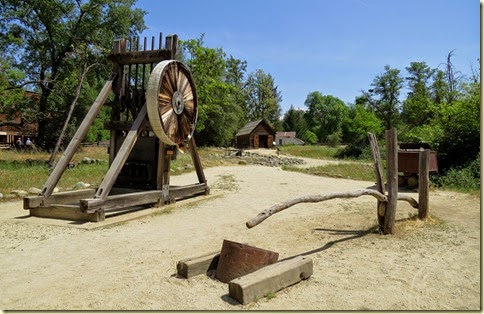

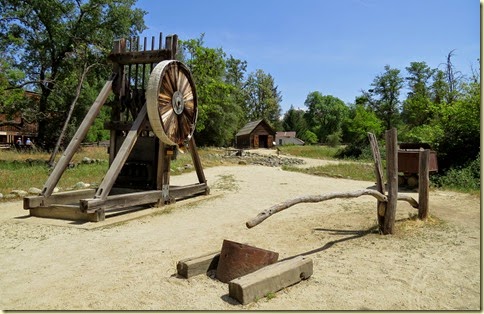
Comentários